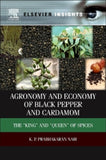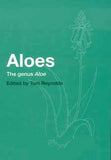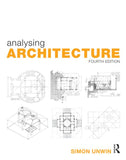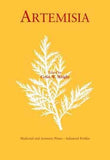Sensory Shelf Life Estimation of Food Products By Guillermo Hough
Book Description
Complying with food regulations and, more importantly, quality standards, requires practical and reliable methods to estimate a product’s shelf life. Emphasizing the importance of the consumer’s perception of when food has reached the end of its shelf life, Sensory Shelf Life Estimation of Food Products provides a tool for adequately predicting sensory shelf life (SSL).
The book delineates the basics of sensory analysis and how it applies to shelf-life studies and includes discussions of experimental design aspects, survival analysis methodology, and its extensions. It provides detailed instructions and software functions for performing SSL estimations, accompanied by data sets and the R Statistical Package functions that are available for download. The author presents the cut-off point methodology used to estimate SSL when the survival analysis methods get complicated. He includes a chapter on accelerated storage covering kinetics, calculations of prediction confidence intervals and potential pitfalls. He also examines extensions of survival analysis statistics to other areas of food quality such as optimum concentration of ingredients and optimum cooking temperatures.
Microbiologically stable foods, such as biscuits or mayonnaise, will have their shelf-life defined by the changes in their sensory properties. Many fresh foods, such as yogurt or pasta, after relatively prolonged storage may be microbiologically safe to eat but rejected due to changes in their sensory properties. Shelf life in most food products is determined by sensory issues instead of microbiological or chemical concerns. This book offers key techniques for experimental design, storage, consumer testing procedures, and calculations. It includes methods for accelerated storage experiments, thoroughly explains statistical data treatment, and includes practical examples.
Table of Contents
Introduction
Sensory Shelf Life Definition
Labeling Regulations
Shelf Life of Foods Is Sensory Shelf Life
Importance of the Consumer in Defining Food Quality
Books on Shelf Life of Foods
References
Principles of Sensory Evaluation
Introduction
Definition of Sensory Evaluation
Sensory Analysis: Trained Panels versus Experts
General Requirements and Conditions for Sensory Tests
Physiological Factors
Psychological Factors
Sensory Evaluation Methods
References
Design of Sensory Shelf-Life Experiments
Initial Considerations
Approximations of Shelf-Life Values
References
Survival Analysis Applied to Sensory Shelf Life
What is Survival Analysis?
Censoring
Survival and Failure Functions
Shelf Life Centered on the Product or on Its Interaction with the Consumer?
Experimental Data Used to Illustrate the Methodology
Censoring in Shelf-Life Data
Model to Estimate the Rejection Function
Calculations Using the R Statistical Package
Interpretation of Shelf-Life Calculations
An Additional Example
Should Consumers be Informed?
Is There a Way to Deal with Totally New Products?
References
Survival Analysis Continued: Number of Consumers, Current Status Data, and Covariates
Number of Consumers
Current Status Data
Introducing Covariates in the Model
References
Cut-Off Point Methodology
When is the Survival Statistics Methodology Difficult to Apply?
Basics of the Cut-Off Point Methodology
Approaches in Establishing a COP
Methodology to Measure the COP
Instrumental Cut-Off Points
Caveats for Using COP Methodology
References
Accelerated Storage
Introduction
Arrhenius Equation and Activation Energy
The Use of Q10
Survival Analysis Accelerated Storage Model
Potential Pitfalls of Accelerated Shelf-Life Testing
Conclusion on Accelerated Testing
References
Other Applications of Survival Analysis in Food Quality
Consumer Tolerance Limits to a Sensory Defect
Optimum Concentration of Ingredients in Food Products
Optimum Salt Level in French Bread
Internal Cooking Temperature of Beef
Optimum Ripening Times of Fruits
References
Index
Author(s)
Biography
A research scientist with the Commission de Ivestigaciones Cientificas, Guillermo Hough is a renowned academic in sensory/consumer sciences. Dr. Hough conducts his research in the area of sensory science and has become an expert in the field of sensory shelf life, having published 20 refereed articles on this theme. A dynamic speaker at international conferences and symposiums, he also lead the collaborative Ibero-American project (CYTED program), which stated the basics for the estimation and modelization of sensory shelf life. His course on sensory science and shelf life has been very popular in Argentina, Chile, Colombia, Italy, Mexico, New York and Paris. His group is in close contact with local and regional food companies, performing a wide range of sensory tests and panel testing. Dr. Hough works at the Instituto Superior Experimental de Tecnologia Alimentaria in the small town of Nueve de Julio, Provincia de Buenos Aires, Argentina.


















